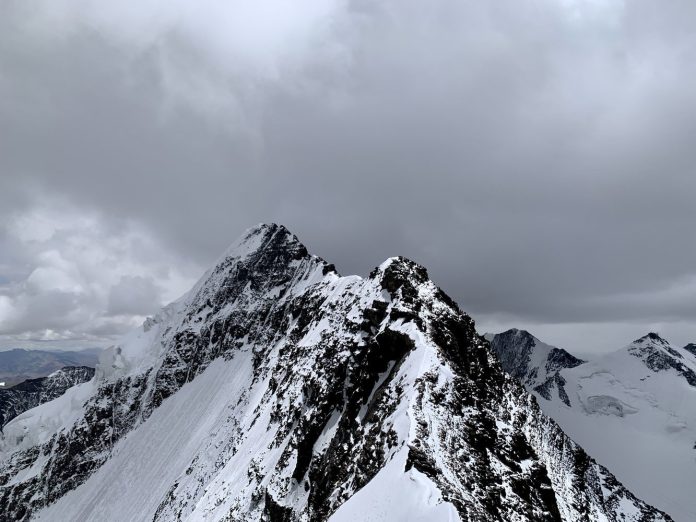Kang Yatse 2 Expedition: Introduction
Kang Yatse 2 expedition is a challenging and exciting adventure in the Himalayas. The summit of Kang Yatse 2 is located at a height of 20,505 ft (6,250 m). The importance of weather and seasonal considerations must be taken into account in this expedition. The team must carefully plan their ascent to avoid dangerous weather conditions and take advantage of the best seasonal window for climbing. Proper acclimatization and physical fitness are crucial for success in this high-altitude environment.
The Kang Yatse 2 expedition is an excellent choice for experienced climbers and those seeking their first 6000m ascent. It offers a challenging yet manageable climb, making it suitable for individuals with proper training. The route is less technically demanding compared to Kang Yatse 1, which makes it more accessible for climbers with intermediate skills. The stunning panoramic views of the surrounding Himalayan range and the Ladakh region add to the allure of this climb. However, it is essential to be well-prepared, equipped and informed about the local weather conditions before undertaking the ascent.
The blog post emphasizes the importance of preparation and caution in mountaineering expeditions. It also discusses the essential factors contributing to a successful climb, including weather conditions, timing, and physical fitness.
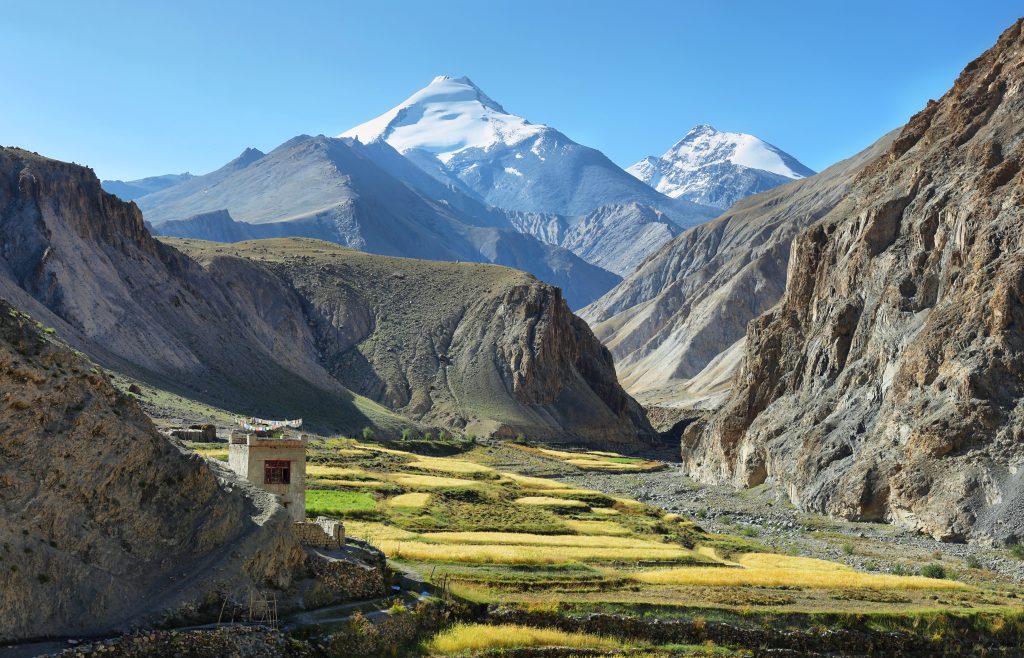
Kang Yatse 2 Expedition Seasons
Kang Yatse is a mountain located in Ladakh, Union Territory (UT) of India. It consists of two peaks: Kang Yatse 1 and Kang Yatse 2. Kang Yatse 1 is the highest peak at approximately 20,997 ft (6,400 m), attracting mountaineers with technical climbing routes. Kang Yatse 2, around 20,305 ft (6,187 m), is considered a trekking peak with less technical difficulty. Weather conditions vary based on the time of year and altitude. Proper preparation, equipment, and local guidance are crucial for climbers and trekkers. Here are the typical weather conditions you might encounter during an expedition to Kang Yatse 2:
Summer (June to August)
During the day, temperatures can range from 10 to 20 degrees Celsius at lower altitudes. However, at higher altitudes, temperatures can drop below freezing point. Nighttime temperatures can drop significantly, often reaching below freezing point, especially at higher altitudes. The summer months are the monsoon season in the region, so there is a higher chance of rainfall. It’s essential to be prepared for rain showers and occasional thunderstorms.
Autumn (September to October)
Temperatures start to cool down during autumn. Daytime temperatures can range from 5 to 15 degrees Celsius at lower altitudes, while higher altitudes may experience freezing temperatures during the day. Nights become colder, with temperatures dropping below freezing point, especially at higher altitudes. Precipitation decreases compared to the monsoon season, but there may still be occasional rainfall or snowfall, particularly in October.
Winter (November to February)
Winter in Kang Yatse 2 is extremely cold. Daytime temperatures may range from -10 to 5 degrees Celsius at lower altitudes. However, temperatures can drop significantly at higher altitudes, often reaching -20 degrees Celsius or lower. Nights are even colder, with temperatures dropping well below freezing throughout the region. Snowfall is common during winter, and the region may receive heavy snowfall. It’s essential to be prepared for severe weather conditions and potential avalanches.
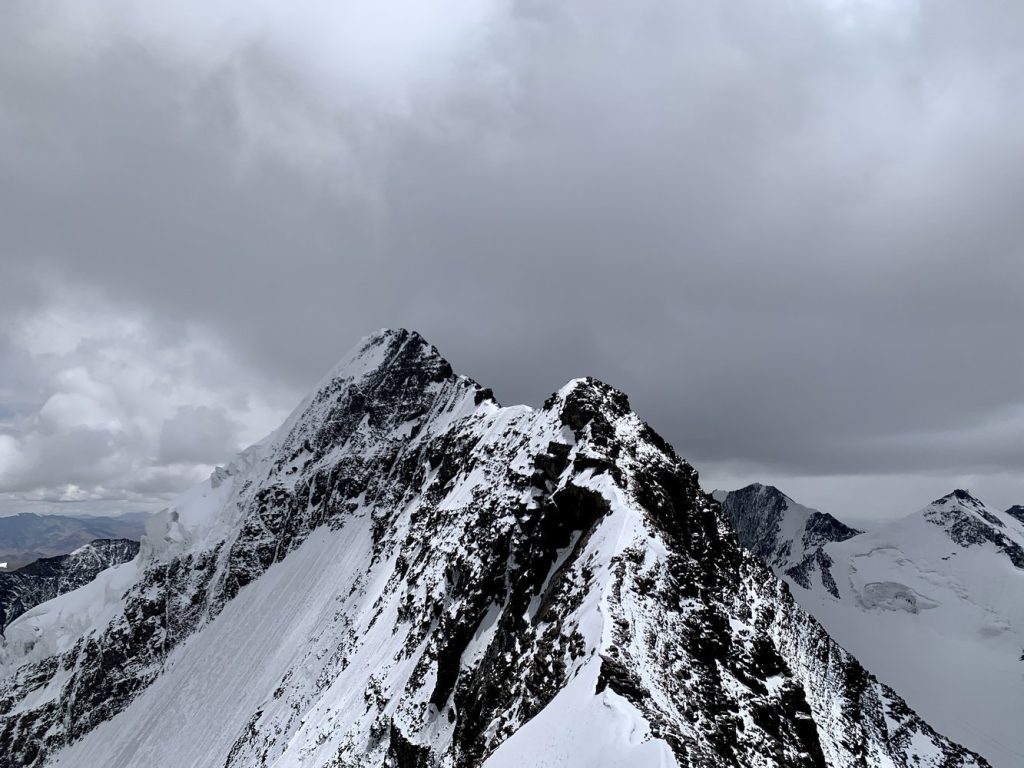
Spring (March to May)
As spring arrives, temperatures start to rise. Daytime temperatures can range from 5 to 15 degrees Celsius at lower altitudes, while higher altitudes may still experience freezing temperatures during the day. Nights remain cold, with temperatures dropping below freezing point, especially at higher altitudes. Spring is the dry season in the region, but there may still be occasional rainfall or snowfall.
It’s important to note that weather conditions can change rapidly in mountainous regions and can be more severe and unpredictable at higher altitudes. It is advisable to check the weather forecast regularly, be prepared for sudden changes, and have proper equipment and clothing suitable for the prevailing conditions. Additionally, having a good expedition team with experienced climbing guides and team is very crucial for a safe and successful summit.

Potential Weather Hazards and Challenges
Kang Yatse 2 is a mountain peak in Ladakh, Union Territory of India. Here are some potential weather hazards that climbers may face:
- Extreme Cold: Kang Yatse 2 is situated in a high-altitude region where temperatures can drop significantly, especially during the winter months and at night. Cold temperatures can lead to frostbite, hypothermia, and other cold-related injuries if climbers are not adequately prepared with proper gear and clothing. To mitigate the risks of extreme cold, climbers should carry high-quality cold-weather gear, including insulated clothing, gloves, and boots, and ensure proper layering. Paying attention to weather forecasts and planning climbs during milder seasons can also help manage cold-related dangers.
- High Winds: Mountain peaks, including Kang Yatse 2, are prone to strong and gusty winds. High winds can make climbing more challenging and increase the risk of falls and accidents, especially on exposed ridges and summits. It is crucial to be prepared for strong winds and secure equipment and tents properly. Climbers should be prepared with sturdy and wind-resistant equipment, such as tents and harnesses, and secure their gear properly to prevent it from being blown away. Monitoring weather conditions and avoiding exposed areas during periods of high winds is essential for safety.
- Snowfall and Blizzards: Kang Yatse 2 experiences snowfall throughout the year, but is more prevalent in winter and early spring. Heavy snowfall can make climbing more difficult, create avalanche risks, and reduce visibility. Climbers should be prepared for snowstorms and blizzards, which can be dangerous and require proper sheltering. Being equipped with appropriate winter gear, such as crampons and ice axes, and maintaining good visibility through goggles or sunglasses is crucial when facing snowfall and blizzards. Choosing the right time to climb and being prepared to hunker down or turn back in adverse weather conditions are important precautions.
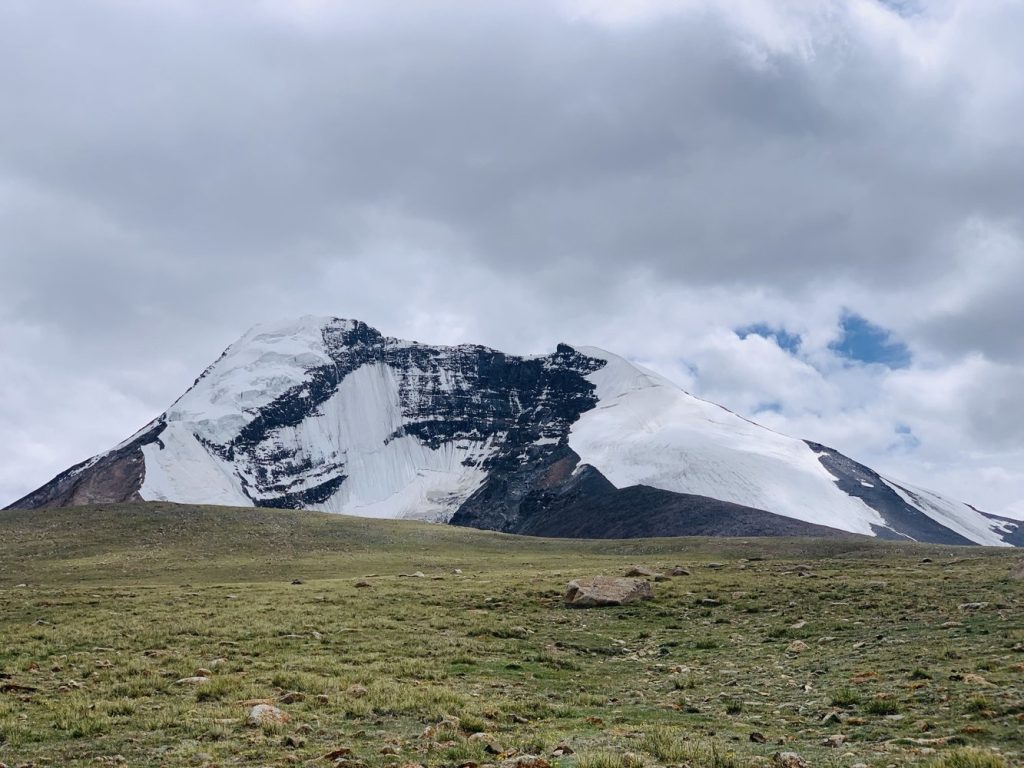
- Avalanche Risk: The region around Kang Yatse 2 is prone to avalanches, especially in winter and early spring. Climbers must be knowledgeable about assessing avalanche conditions, carrying appropriate safety equipment such as beacons, shovels, and probes, and have the necessary training in avalanche rescue techniques. Climbers should undergo avalanche safety training, carry avalanche rescue equipment, and have the knowledge to assess avalanche conditions. Staying up to date with avalanche bulletins and avoiding high-risk areas during periods of instability is essential for managing avalanche hazards.
- Rapid Weather Changes: Mountainous regions can experience rapid weather changes, including the formation of clouds, thunderstorms, and lightning. Climbers should be aware of the local weather patterns and monitor weather forecasts regularly to avoid being caught in dangerous weather conditions. Being attentive to weather forecasts and regularly monitoring changes in the local weather conditions can help climbers stay informed and make timely decisions. Having a flexible itinerary and being prepared to adjust plans accordingly is important when facing rapid weather changes.
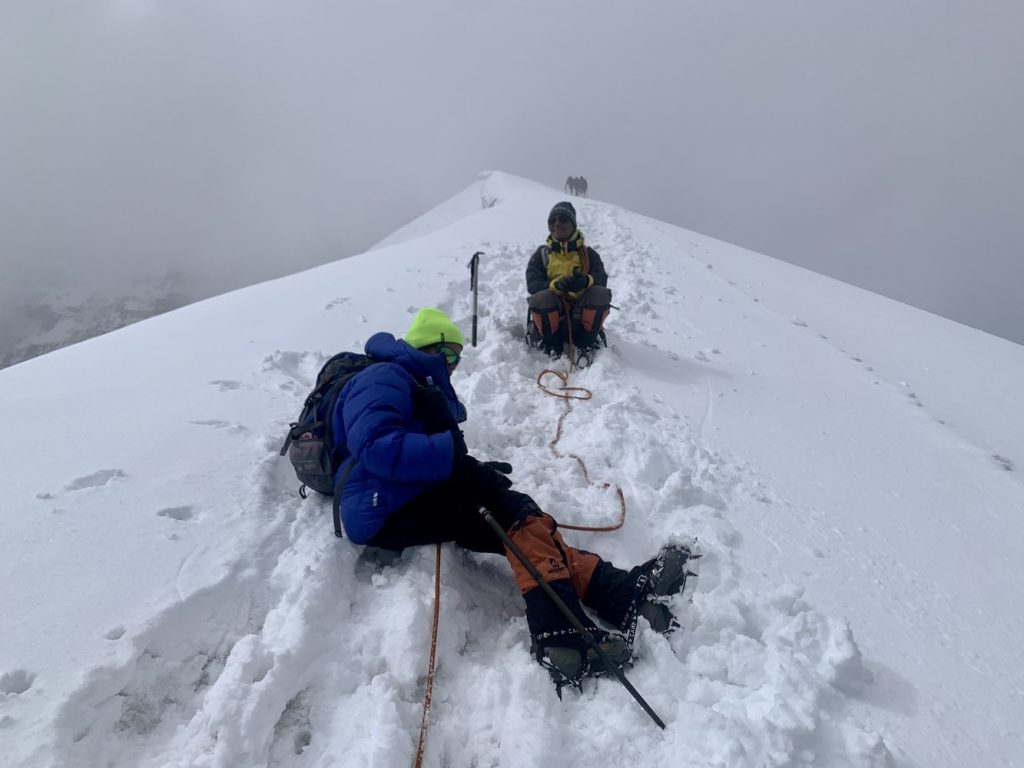
Acute mountain sickness (AMS):
Altitude sickness, also known as acute mountain sickness (AMS), can be a concern when climbing high-altitude peaks like Kang Yatse 2. Altitude sickness occurs when the body cannot adjust to the reduced oxygen levels at high altitudes. Symptoms typically include headache, nausea, dizziness, fatigue, loss of appetite, and difficulty sleeping. Proper acclimatization is crucial to minimize the risk of altitude sickness. Ascend gradually, allowing your body time to adjust to the altitude. Plan your itinerary to include rest days at intermediate altitudes, allowing your body to acclimatize before ascending further. Be vigilant in recognizing the early signs of altitude sickness. If you or any team member experiences symptoms like severe headache, persistent vomiting, difficulty breathing, confusion, or a rapid heartbeat, it’s crucial to immediately descend to a lower altitude.
Stay well-hydrated throughout your expedition by drinking plenty of fluids, preferably water. Proper nutrition is also essential, as your body requires additional energy at high altitudes. Consume a balanced diet rich in carbohydrates and avoid excessive alcohol and caffeine intake. Pay attention to your body’s signals. If you or anyone in your group is experiencing severe symptoms of altitude sickness, do not ignore them or push through. Descend immediately and seek medical assistance if necessary. Remember, altitude sickness can affect anyone, regardless of their experience at high altitudes. Proper preparation, acclimatization, and monitoring of symptoms are crucial to reducing the risks associated with altitude sickness during your Kang Yatse 2 expedition.
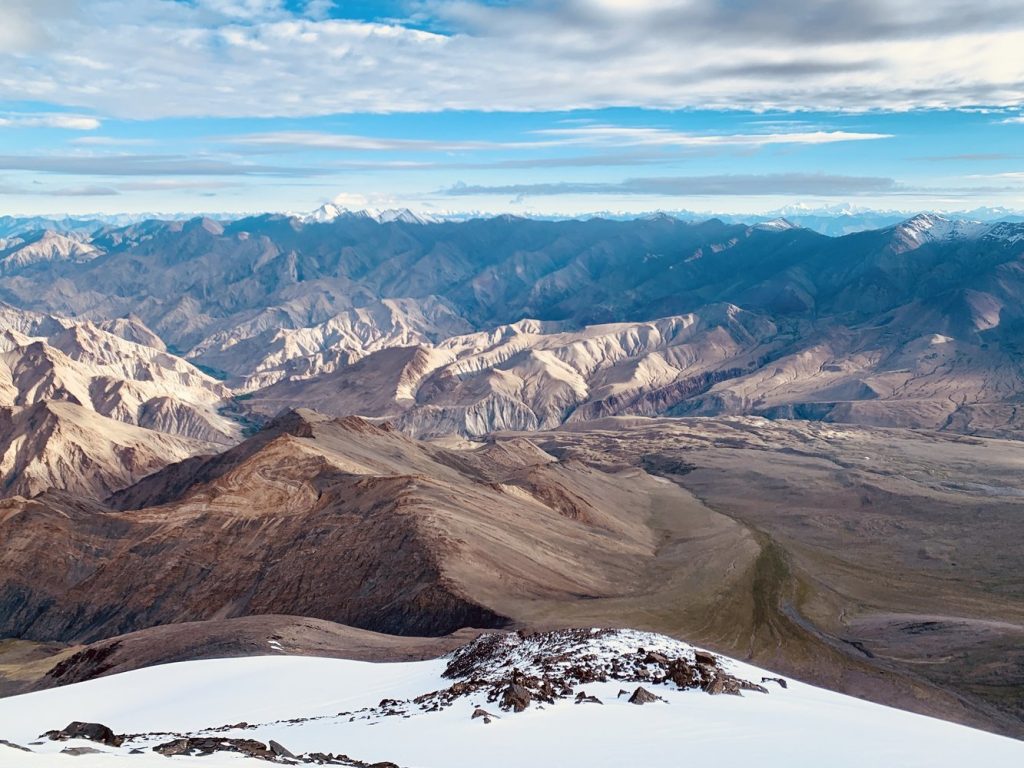
How to Pack According to Weather for Kang Yatse 2 Expedition
Clothing
- Base Layers: Choose moisture-wicking and insulating base layers to regulate your body temperature.
- Insulating Layers: Carry fleece jackets or down-filled mid-layers to provide warmth during colder conditions.
- Outer Shell: Invest in a durable, waterproof shell jacket and pants to protect you from wind, snow, and rain. Look for breathable fabrics with sealed seams.
- Trekking Pants: Opt for lightweight, quick-drying pants with good mobility. Convertible pants are also helpful for adjusting to different temperature changes.
- Trekking Shirts: Pack a few lightweight, moisture-wicking shirts for trekking, preferably long-sleeved to protect against the sun and insects.
- Insulated Jacket: Bring a warm jacket for colder nights at higher altitudes.
- Headwear: Carry a warm beanie or hat, a sun hat with a wide brim, and a buff or neck gaiter for face protection.
- Gloves: Have a pair of lightweight liner gloves for lower altitudes and a thicker pair of insulated gloves for higher altitudes.
- Socks: Choose moisture-wicking and cushioned hiking socks to prevent blisters. Carry extra pairs for longer treks.
Footwear
- Hiking Boots: Invest in sturdy, waterproof hiking boots with ankle support. Ensure they are broken in before the expedition to avoid discomfort.
- Crampons: Crampons are a key traction device that provide added security to prevent falls and other accidents. Invest in high quality crampons to avoid any accidents.
- Gaiters: Wear gaiters to remove snow, debris, and moisture from your boots.
Tips for layering and staying warm on the Kang Yatse 2 expedition
Layering is essential to trap heat and insulate your body. Wear a base layer made of moisture-wicking material, followed by a mid-layer for insulation and an outer shell for protection against wind and moisture. Choose fabrics like wool or synthetic materials that retain heat even when wet. Wear thermal socks, and consider using toe warmers or vapor barrier liners to prevent moisture from reaching your feet. Moisture is your enemy in cold weather. Wear moisture-wicking base layers, avoid sweating excessively by adjusting your clothing layers accordingly, and carry spare clothes to change into if necessary. Proper hydration and nutrition help regulate your body temperature. Drink plenty of water and consume calorie-dense, high-energy foods to maintain energy levels and generate body heat. Fill a water bottle with hot water and keep it in your sleeping bag or inside your jacket to provide localized warmth. Always prioritize safety and be aware of the signs of hypothermia and frostbite.

Safety considerations for Kang Yatse 2 expedition
Importance of monitoring weather conditions for safety
Unfavourable weather conditions can increase the likelihood of accidents and injuries during an expedition. Slippery surfaces, reduced visibility, or unstable terrain caused by adverse weather can lead to falls, avalanches, or other dangerous situations. By monitoring weather conditions, climbers can anticipate and avoid such risks, ensuring their safety. Weather conditions can significantly impact climbing strategies and routes. Monitoring weather forecasts allows expedition leaders and climbers to plan their ascent based on predicted weather patterns, including wind direction and speed, temperature changes, and precipitation. Monitoring weather conditions is essential for climbers attempting to summit Kang Yatse 2 or any other mountain. It enables them to make informed decisions, mitigate risks, and prioritize safety throughout the Kang Yatse 2 expedition.

Strategies for staying safe during extreme weather
- Respond to alerts and warnings from local authorities or mountain rescue teams.
- Invest in high-quality gear designed for extreme weather conditions.
- Ensure equipment is in good condition and suitable for the expected weather.
- Remain calm and avoid rushing during ascent and descent.
- Seek immediate shelter if weather conditions worsen.
- Set up a sturdy tent or find naturally sheltered areas.
- Monitor weather forecasts and adjust plans accordingly.
- Undergo avalanche safety training and carry proper rescue equipment.
- Stay informed about avalanche conditions through bulletins.
- Be flexible and willing to adjust plans based on weather changes.
To Conclude…
Safety should always be a top priority, so take all necessary precautions and follow the guidance of experienced climbers or guides. While climbing Kang Yatse 2, stay attentive to weather conditions and be prepared to adjust your plans accordingly. Take it one step at a time, appreciating each milestone’s incredible scenery and accomplishment. Remember that the journey itself is as important as reaching the summit. Most importantly, enjoy every moment of this incredible adventure. The mountains have a way of revealing our strengths and providing a sense of awe and wonder. Take the time to immerse yourself in the experience, cherish the friendships formed, and create memories that will last a lifetime.
Book the Kang Yatse 2 Expedition Now!
